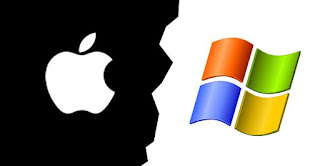Copyright Law 1987 (Media Law)
ASSIGNMENT
FOR MLL 2013
MOHAMAD ABU HUZAIFAH BIN MOHD SALLEH
1121118373
MOHAMAD ABU HUZAIFAH BIN MOHD SALLEH
1121118373
TRIMESTER
1730
2017/2018
Copyright Act 1987
Lecture on Infringement of Copyright
This blog entry is intended for study or research purposes only on topics related to copyright issue. I chose to discuss a topic about copyright issue arising in creative multimedia. First of all, before i go more deep about copyright, I want to discuss and explain about the meaning of copyright. Copyright is a legal right that grants the creator of an original work exclusive rights for its use and distribution. This is usually only for a limited time. The exclusive rights are not absolute but limited by limitations and exceptions to copyright law, including fair use. A major limitation on copyright is that copyright protects only the original expression of ideas, and not the underlying ideas themselves.
Copyright is a form of intellectual property, applicable to certain forms of creative work. Some, but not all jurisdictions require "fixing" copyrighted works in a tangible form. It is often shared among multiple authors, each of whom holds a set of rights to use or license the work, and who are commonly referred to as rights holders. These rights frequently include reproduction, control over derivative works, distribution, public performance, and moral rights such as attribution.
Copyrights are considered "territorial rights", which means that they do not extend beyond the territory of a specific jurisdiction. While many aspects of national copyright laws have been standardized through international copyright agreements, copyright laws vary by country.
Typically, the duration of a copyright spans the author's life plus 50 to 100 years (that is, copyright typically expires 50 to 100 years after the author dies, depending on the jurisdiction). Some countries require certain copyright formalities to establishing copyright, but most recognize copyright in any completed work, without formal registration. Generally, copyright is enforced as a civil matter, though some jurisdictions do apply criminal sanctions.
Most jurisdictions recognize copyright limitations, allowing "fair" exceptions to the creator's exclusivity of copyright and giving users certain rights. The development of digital media and computer network technologies have prompted reinterpretation of these exceptions, introduced new difficulties in enforcing copyright, and inspired additional challenges to the philosophical basis of copyright law. Simultaneously, businesses with great economic dependence upon copyright, such as those in the music business, have advocated the extension and expansion of copyright and sought additional legal and technological enforcement.
Copyright came about with the invention of the printing press and with wider literacy. As a legal concept, its origins in Britain were from a reaction to printers' monopolies at the beginning of the 18th century. The English Parliament was concerned about the unregulated copying of books and passed the Licensing of the Press Act 1662, which established a register of licensed books and required a copy to be deposited with the Stationers' Company, essentially continuing the licensing of material that had long been in effect.
Copyright laws allow products of creative human activities, such as literary and artistic production, to be preferentially exploited and thus incentivized. Different cultural attitudes, social organizations, economic models and legal frameworks are seen to account for why copyright emerged in Europe and not, for example, in Asia. In the Middle Ages in Europe, there was generally a lack of any concept of literary property due to the general relations of production, the specific organization of literary production and the role of culture in society. The latter refers to the tendency of oral societies, such as that of Europe in the medieval period, to view knowledge as the product and expression of the collective, rather than to see it as individual property. However, with copyright laws, intellectual production comes to be seen as a product of an individual, with attendant rights. The most significant point is that patent and copyright laws support the expansion of the range of creative human activities that can be commodified. This parallels the ways in which capitalism led to the commodification of many aspects of social life that earlier had no monetary or economic value per se.
Copyright has grown from a legal concept regulating copying rights in the publishing of books and maps to one with a significant effect on nearly every modern industry, covering such items as sound recordings, films, photographs, software, and architectural works.
In addition, intellectual property right is a generic name foe exclusive legal rights that arise from intellectual property aforementioned. The law ensures that owners of creative works, inventions and commercial goodwill are protected. This protection is provided through national legislation and international conventions.
The question is who is an author? A writer or composer or artist. Or the person by whom the arrangement for the the taking of the photograph were undertaken. Or the person by whom the arrangements for the making of the film or recording were undertaken. The person transmitting/providing a broadcast programme and any person by whom the work was made.
These people are copyright owners. 1. Architects 2. Computer Programmers 3. Lyricists 4. Scriptwriters 5. Photographers 6. Artist. There are two elements of copyright. The first one is originality. Means in order for a material to be protected under copyright, it must be "an original work of authorship". The second one is fixation. Means, tangible medium example it must be reduced to a fixed form. Sufficiently permanent or stable medium to permit the copyright able material to be perceived. Therefore a poem that is not recorded or a lecture that is not taped cannot be protected under the law.
Next question is what is original?
- Independently created
- Not copied or duplicated
- Sufficient skill and effort
- Creative
For defence to copyright infringement, there is Section 13(2). It's about Fair use/Fair Dealing.
The content of the Section 13(2) is where a copyrighted material is used for purposes of non-profit research, private study, critcism, review or the reporting of current events. If such use is public, then it must be accompanied by an acknowledgement of the tittle of the work and its authorship.
But how can you protect your copyright? There is way to protect it. For example, although there is no requirement to register copyright, the law has provided means by which a copyright owner can protect his/her work. And it effective from 1 June 2012, the copyright(Voluntary Notification) Regulations 2012 allows a copyright owner to issue a Copyright Voluntary Notification with MyIPO.
Copyright is a form of intellectual property, applicable to certain forms of creative work. Some, but not all jurisdictions require "fixing" copyrighted works in a tangible form. It is often shared among multiple authors, each of whom holds a set of rights to use or license the work, and who are commonly referred to as rights holders. These rights frequently include reproduction, control over derivative works, distribution, public performance, and moral rights such as attribution.
Copyrights are considered "territorial rights", which means that they do not extend beyond the territory of a specific jurisdiction. While many aspects of national copyright laws have been standardized through international copyright agreements, copyright laws vary by country.
Typically, the duration of a copyright spans the author's life plus 50 to 100 years (that is, copyright typically expires 50 to 100 years after the author dies, depending on the jurisdiction). Some countries require certain copyright formalities to establishing copyright, but most recognize copyright in any completed work, without formal registration. Generally, copyright is enforced as a civil matter, though some jurisdictions do apply criminal sanctions.
Most jurisdictions recognize copyright limitations, allowing "fair" exceptions to the creator's exclusivity of copyright and giving users certain rights. The development of digital media and computer network technologies have prompted reinterpretation of these exceptions, introduced new difficulties in enforcing copyright, and inspired additional challenges to the philosophical basis of copyright law. Simultaneously, businesses with great economic dependence upon copyright, such as those in the music business, have advocated the extension and expansion of copyright and sought additional legal and technological enforcement.
Copyright came about with the invention of the printing press and with wider literacy. As a legal concept, its origins in Britain were from a reaction to printers' monopolies at the beginning of the 18th century. The English Parliament was concerned about the unregulated copying of books and passed the Licensing of the Press Act 1662, which established a register of licensed books and required a copy to be deposited with the Stationers' Company, essentially continuing the licensing of material that had long been in effect.
Copyright laws allow products of creative human activities, such as literary and artistic production, to be preferentially exploited and thus incentivized. Different cultural attitudes, social organizations, economic models and legal frameworks are seen to account for why copyright emerged in Europe and not, for example, in Asia. In the Middle Ages in Europe, there was generally a lack of any concept of literary property due to the general relations of production, the specific organization of literary production and the role of culture in society. The latter refers to the tendency of oral societies, such as that of Europe in the medieval period, to view knowledge as the product and expression of the collective, rather than to see it as individual property. However, with copyright laws, intellectual production comes to be seen as a product of an individual, with attendant rights. The most significant point is that patent and copyright laws support the expansion of the range of creative human activities that can be commodified. This parallels the ways in which capitalism led to the commodification of many aspects of social life that earlier had no monetary or economic value per se.
Copyright has grown from a legal concept regulating copying rights in the publishing of books and maps to one with a significant effect on nearly every modern industry, covering such items as sound recordings, films, photographs, software, and architectural works.
In addition, intellectual property right is a generic name foe exclusive legal rights that arise from intellectual property aforementioned. The law ensures that owners of creative works, inventions and commercial goodwill are protected. This protection is provided through national legislation and international conventions.
The question is who is an author? A writer or composer or artist. Or the person by whom the arrangement for the the taking of the photograph were undertaken. Or the person by whom the arrangements for the making of the film or recording were undertaken. The person transmitting/providing a broadcast programme and any person by whom the work was made.
These people are copyright owners. 1. Architects 2. Computer Programmers 3. Lyricists 4. Scriptwriters 5. Photographers 6. Artist. There are two elements of copyright. The first one is originality. Means in order for a material to be protected under copyright, it must be "an original work of authorship". The second one is fixation. Means, tangible medium example it must be reduced to a fixed form. Sufficiently permanent or stable medium to permit the copyright able material to be perceived. Therefore a poem that is not recorded or a lecture that is not taped cannot be protected under the law.
Next question is what is original?
- Independently created
- Not copied or duplicated
- Sufficient skill and effort
- Creative
For defence to copyright infringement, there is Section 13(2). It's about Fair use/Fair Dealing.
The content of the Section 13(2) is where a copyrighted material is used for purposes of non-profit research, private study, critcism, review or the reporting of current events. If such use is public, then it must be accompanied by an acknowledgement of the tittle of the work and its authorship.
But how can you protect your copyright? There is way to protect it. For example, although there is no requirement to register copyright, the law has provided means by which a copyright owner can protect his/her work. And it effective from 1 June 2012, the copyright(Voluntary Notification) Regulations 2012 allows a copyright owner to issue a Copyright Voluntary Notification with MyIPO.
 | ||||||||||||||||||||||||||
| A copyright symbol used in copyright notice
Next, I will discuss and explain about what is category of Multimedia in the Copyright Act. Actually, There is no specific category of multimedia in the Copyright Act. Multimedia is a relatively new term that refers to a combination of material, the individual parts of which might be otherwise available in a digital format.
Next, what is Multimedia product? A multimedia product is one where:
Examples include CD-Roms, interactivity websites and interactive computer games (eg text and graphic based learning objects such as interactive Flash animations). It could also include interactive or audiovisual content in an artwork, such as a video installation
The next question is how are multimedia products protected under copyright? The exact form of protection for a multimedia product in the Copyright Act is unclear. The three main categories under which multimedia products may be protected are as a:
1. Computer program
Where a multimedia product contains computer programs or software that allow non linear viewing of the material or use of the material contained in the multimedia product, it may be categorised as a computer program.
2. A compilation
A multimedia product that mainly is made up of text, figures and symbols may be categorised as a compilation, a sub category of literary Works. If the product is made up of artistic images only, it will not be a compilation and each image would be protected separately as an artistic work. If the product is made of both text and images, it is likely the images would be protected separately as artistic works.
If the multimedia product contains any images that are capable of being shown as a moving picture (film or video) the product may be categorised as a film.
Copying and communicating material from multimedia
In general, copyright in print works, musical artistic works, sound recordings, and film contained in a multimedia product will not be infringed where the copy or communications is done with the express permission of the copyright owne and under the fair dealing, flexible dealing or other educational exceptions.
Fair dealing
The copying of multimedia products or work contained in multimedia products for fair dealing purposes is free and does not require the permission of the copyright owner. The relevant fair dealing exceptions are:
Flexible dealings
Schools and TAFE institutes can now use multimedia products for non-commercial teaching purposes if the use is not covered by another exception or Statutory or Voluntary Licence. To use the flexible dealings exception, teachers must assess whether the proposed use Is a special case your use will be a special case where it is narrow in both a qualitative or quantitative sense. This means that you are only using what you need for educational instruction
Is for educational instruction educational instruction means teaching (including remote teaching), preparation for teaching, preparing materials for students to use for homework or research tasks, or other uses that are in connection with teaching.
Educational exceptions
There are no statutory educational exceptions that deal specifically with multimedia products
Other relevant issues for multimedia Works
Creating new multimedia products
Multimedia products often incorporate existing works which are separately protected under copyright, for example:
Here are the example case of copyright.
1. A&M Record Inc v Napster Inc (Click for more detail)
In 2000, one of the most famous cases in intellectual property law was taken to the U.S. Court of Appeals, 9th Circuit, when a group of major record labels took on Napster, Inc. The music file-sharing company, set up by then 18-year old Northeastern University student Shawn Fanning and his partner Sean Parker, was a revolutionary piece of sharing software, which allowed users to share any number of music files online. At its peak the software had around 20 million users sharing files peer-to-peer. A&M Records, along with a list of 17 other companies and subsidiaries accused Napster of copyright infringement, for allowing users to search and download MP3 files from other users’ computers. Rock band, Metallica and hip hop star Dr Dre also filed separate cases against the sharing software company. These cases led to a federal judge in San Fransisco ordering Napster to close its free file-sharing capacities. After the judge’s decision, the company eventually declared bankruptcy before re-emerging as a paid online music service, while German Media Corporation Bertelsmann AG ended up paying $130 million in damages to the National Music Publisher Association, after propping Napster up during its financial decline. This case is remembered as a defining case of the 21st century, as it was one of the first to address the impact peer-to-peer file-sharing online could have on copyright.
| ||||||||||||||||||||||||||










Comments
Post a Comment